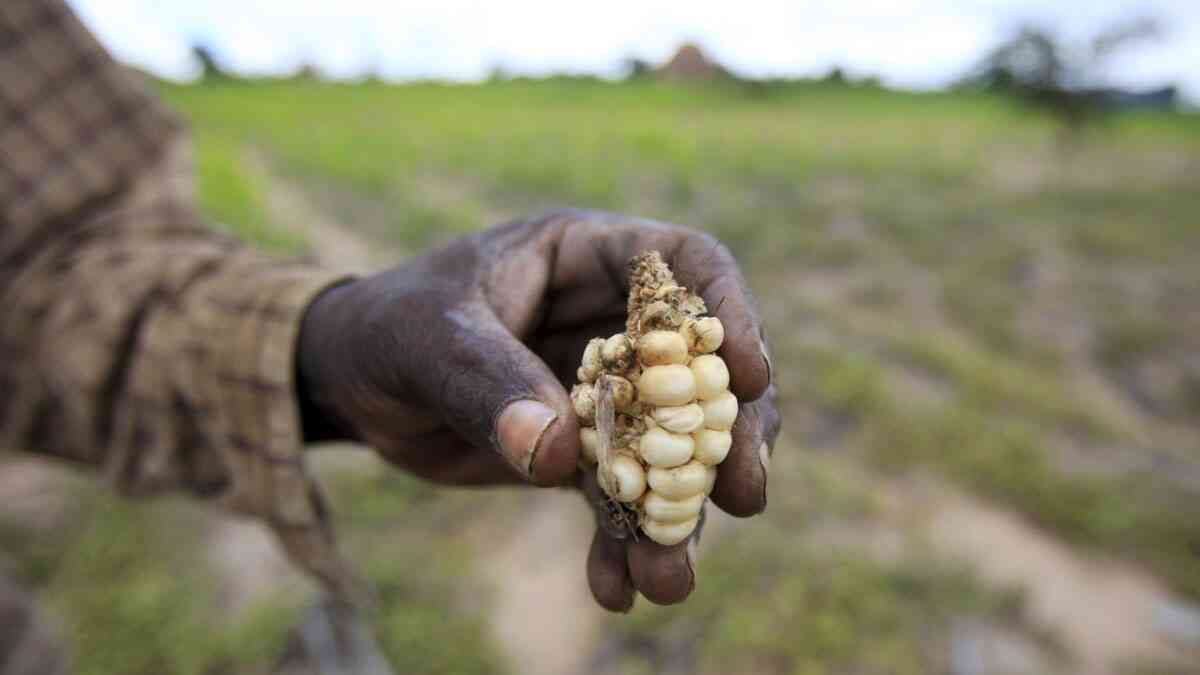
EL Niño is a climate phenomenon characterised by the periodic warming of sea surface temperatures in the central and eastern equatorial Pacific Ocean.
This warming alters atmospheric circulation patterns, leading to changes in weather across the globe. El Niño events typically occur every 2-7 years and can last for several months to over a year. The opposite phase of El Niño is known as La Niña, characterised by cooler-than-average sea surface temperatures in the same region.
Globally, El Niño impacts weather patterns in various ways, including:
Increased rainfall: Some regions experience heavier-than-normal rainfall, leading to flooding and landslides.
Droughts: Other areas may face prolonged dry periods and droughts, impacting agriculture and water availability.
Temperature anomalies: El Niño can cause deviations from normal temperatures, affecting ecosystems, agriculture, and human health.
Tropical cyclones: El Niño can influence the frequency and intensity of tropical cyclones in different parts of the world.
Zimbabwe's vulnerability to El Niño
- Mavhunga puts DeMbare into Chibuku quarterfinals
- Bulls to charge into Zimbabwe gold stocks
- Ndiraya concerned as goals dry up
- Letters: How solar power is transforming African farms
Keep Reading
Being in southern Africa, makes Zimbabwe, particularly, vulnerable to the El Niño effect due to its geographical location, climatic patterns, and reliance on rain-fed agriculture. Some key reasons for Zimbabwe's vulnerability to El Niño include:
Agricultural dependence: The majority of Zimbabwe's population relies on agriculture for their livelihoods. Rain-fed agriculture is common, making the country highly sensitive to changes in rainfall patterns associated with El Niño events. In cases where people have drilled boreholes, many of those boreholes are not connected to drip irrigation or centre pivots or any other type of irrigation. Electricity is either non-existent or supplies are erratic and many farmers have installed solar, but many solar units across the country, amongst predominantly black farmers, who find themselves are self-financing (due to their inability to access farming credit due to lack of title), are not connected to water sources. This presents a precarious situation in the event of an El Niño scenario.
Erratic rainfall: El Niño has led to late, irregular and below-average rainfall in Zimbabwe, causing drought conditions that have resulted in crop failures, food shortages, and water scarcity.
Water resources: El Niño has affected water availability in Zimbabwe, impacting both agricultural irrigation and domestic water supply. Drought conditions have led to water stress and shortages, affecting both rural and urban populations.
Food security: The disruption of agricultural activities and reduced crop yields during El Niño events has worsened food insecurity in Zimbabwe. Vulnerable populations, including children and the elderly, are particularly at risk of malnutrition and hunger.
Economic impacts: The agricultural sector plays a significant role in Zimbabwe's economy. Reduced agricultural productivity during El Niño events in the past and currently, have had ripple effects on food prices, inflation, and overall economic stability.
Health Risks: El Niño-induced droughts has increased the risk of waterborne diseases, malnutrition and other health challenges in Zimbabwe. Limited access to clean water and nutritious food has further exacerbated health issues in vulnerable communities.
Severe historical El Niño events
The El Niño effect is not a new phenomenon to Zimbabwe. Post Zimbabwe’s 1980 political independence, there have been three notable El Niño Events as follows:
The 1982-1983 El Niño Event
This El Niño event occurred during the 1982-1983 period.
Impact on agriculture: The 1982-1983 El Niño brought prolonged dry conditions to Zimbabwe, leading to widespread crop failures and reduced agricultural productivity. Maize, the staple food crop in Zimbabwe, was particularly affected, resulting in food shortages and increased food prices.
Impact on water availability: Decreased rainfall during this El Niño event led to water scarcity in many parts of Zimbabwe. Drying rivers and depleted water sources affected irrigation for crops and access to clean water for both agricultural and domestic use.
Impact on food security: The combination of crop failures and reduced water availability severely impacted food security in Zimbabwe. Many communities faced food shortages, malnutrition, and hunger as a result of the poor harvests caused by the drought conditions during the 1982-1983 El Niño.
1997-1998 El Niño event
The 1997-1998 El Niño event occurred during this period.
Impact on agriculture: The 1997-1998 El Niño brought erratic rainfall patterns to Zimbabwe, with some regions experiencing prolonged drought conditions while others faced flooding. These extreme weather events disrupted planting and harvesting cycles, leading to crop failures and reduced agricultural yields.
Impact on water availability: Water availability in Zimbabwe was severely affected by the 1997-1998 El Niño. As in the 1982- 1983 El Niño event, drought conditions resulted in drying rivers, depleted water sources, and limited access to irrigation water for farmers. Flooding in some regions also contaminated water sources, posing health risks to communities.
Impact on food security: The 1997-1998 El Niño had significant implications for food security in Zimbabwe. Crop failures, reduced agricultural productivity, and water scarcity contributed to food shortages, rising food prices, and increased malnutrition among vulnerable populations. Many households struggled to access an adequate and nutritious diet during this period.
2015-2016 El Niño event
The 2015-2016 El Niño event affected Zimbabwe during this period.
Impact on agriculture: The 2015-2016 El Niño brought below-average rainfall to Zimbabwe, leading to poor crop yields and agricultural losses. Maize production, in particular, was severely impacted, exacerbating food insecurity in the country.
Impact on water availability: Water scarcity became a major concern during the 2015-2016 El Niño, as reduced rainfall and drying water sources affected both agricultural irrigation and domestic water supply. As in the 1982-1983 and 1997-1998 El Niño Events, communities faced challenges accessing clean water for drinking, sanitation, and hygiene.
Impact on food security: The 2015-2016 El Niño event worsened food insecurity in Zimbabwe, with many households experiencing food shortages and malnutrition. Declining agricultural productivity, rising food prices, and limited access to water all contributed to the food security crisis during this period.
Implications of the El Niño effect
Crop failures and reduced agricultural productivity as a result of El Niño:
Impact: El Niño-induced droughts and erratic rainfall patterns have led to crop failures and reduced agricultural productivity at the household level. Maize, wheat, and other staple crops have been particularly affected, resulting in poor harvests and limited food supplies.
Implications: Household food stocks have dwindled, leading to food
shortages and insecurity. With limited access to fresh produce, households have struggled to meet their nutritional needs, increasing the risk of malnutrition and related health issues.
Rising food prices, economic strain
Impact: Decreased agricultural productivity during El Niño events have led to food shortages in local markets, causing food prices to rise. The increased cost of food items are currently straining household budgets, especially for low-income families and those living in rural areas.
Implications: Households may have to allocate a larger portion of their income to purchasing food, reducing their ability to meet other essential needs such as healthcare, education, and housing. Economic strain exacerbate poverty and widen existing socio-economic disparities.
Limited access to clean water
Impact: Water scarcity is a certainty during El Niño-induced droughts, affecting household access to clean water for drinking, cooking, and hygiene practices. Currently, reduced water availability is impacting sanitation facilities and hygiene behaviours within households.
Implications: As stated earlier, lack of access to clean water and sanitation facilities increases the risk of waterborne diseases, such as diarrhea and cholera, within households. Poor hygiene practices due to water scarcity further compromises household health and well-being, particularly for children and vulnerable individuals.
Increased reliance on external aid
Impact: In severe cases of food insecurity and limited agricultural productivity resulting from El Niño events, households have been forced to rely on external assistance, such as government aid programs, humanitarian organizations, or food distributions.
Implications: Dependence on external assistance implies an erosion of household food self-sufficiency and resilience, creating a cycle of vulnerability that may persist beyond the immediate impacts of the El Niño event. Long-term reliance on external aid can hinder households' ability to recover and rebuild their livelihoods independently.
The following are coping strategies and resilience building tactics during El Niño: Diversification of crops, livelihoods
Coping strategy: Farmers can diversify their crop production by planting a variety of crops that are more resilient to erratic weather patterns.
Diversification can help mitigate the risk of crop failures during El Niño events.
Resilience building tactic: Encouraging farmers to diversify their income sources beyond agriculture, such as through low maintenance livestock rearing (such as rabbits, turkey, ducks etcetera), handicrafts, or small businesses, can enhance household resilience to fluctuations in agricultural productivity.
Water harvesting, irrigation
Coping strategy: Implementing water harvesting techniques, such as rainwater harvesting and construction of small-scale water storage facilities, can help households conserve water during dry periods and supplement irrigation for crops. Resilience building tactic: Investing by the donating community in sustainable irrigation systems, such as drip irrigation or sprinkler systems, can improve water efficiency in agriculture and reduce reliance on rain-fed farming, enhancing resilience to water scarcity during El Niño events.
Warning systems, preparedness
Coping strategy: Strengthening early warning systems for climate events, such as El Niño, can help communities prepare for potential impacts and take timely actions to mitigate risks, such as adjusting planting schedules or securing food reserves. But some villagers and small farmers do not take heed preferring to stick to what they know best, which is planting during certain months of the year. Resilience building tactic: Conducting community drills, training sessions, and awareness campaigns on disaster preparedness and response can empower households to proactively manage risks and build resilience to climate-related shocks.
Social safety nets
Coping Strategy: Accessing social safety nets, such as food assistance programs, cash transfers, or employment schemes, can provide temporary relief to households facing food insecurity and economic strain during El Niño events. Resilience building tactic: Strengthening social protection systems and safety net programs to be more responsive and adaptive to climate variability can help build long-term resilience among vulnerable households and communities.
Adaptation measures
Coping strategy: Engaging in community-based adaptation measures, such as soil conservation practices, agroforestry, and watershed management, can help build resilience to climate change impacts, including those associated with El Niño. Resilience building tactic: Promoting participatory approaches to natural resource management, land use planning, and climate-smart agriculture practices can enhance community resilience and sustainability in the face of evolving climate conditions.
Climate information, technology
Coping strategy: Providing households with access to climate information, weather forecasts, and agricultural technologies can enable informed decision-making and adaptive responses to changing weather patterns during El Niño events. Resilience building tactic: Investing in climate-resilient technologies, such as drought-resistant seeds, weather-resistant crops, and efficient farming practices, can empower households to adapt to climate variability and enhance their resilience to future shocks.
Conclusion
In conclusion, Zimbabwe's vulnerability to El Niño stems from its dependence on rain-fed agriculture, erratic rainfall patterns, water scarcity, food security challenges, economic impacts, and health risks.
Understanding and addressing these vulnerabilities are crucial for building resilience and adapting to the impacts of climate variability in the region. There have been severe historical El Niño events in Zimbabwe, such as those in 1982-1983, 1997-1998, and 2015-2016, which have had significant impacts on agriculture, water availability, and food security in the country.
Connecting the dots by understanding these historical events can help policymakers, stakeholders, and communities prepare for and mitigate the effects of future El Niño events on Zimbabwe's vulnerable populations. The implications of the El Niño effect on food self-sufficiency at the household level are multifaceted, encompassing crop failures, rising food prices, limited access to clean water, and increased reliance on external assistance.
Addressing these challenges requires a holistic approach that focuses on improving agricultural resilience, water resource management, economic stability, and social safety nets to enhance household food security and self-sufficiency in the face of climate variability. Implementing a combination of coping strategies and resilience building tactics, such as diversification of crops, water harvesting, early warning systems, social safety nets, community-based adaptation measures, and access to climate information and technology, can help households and communities better cope with the impacts of El Niño and build long-term resilience to climate variability and change.
- Ndoro-Mkombachoto is a former academic and banker. She has consulted widely in strategy, entrepreneurship and private sector development for organisations that include Seed Co Africa, Hwange Colliery, RBZ/CGC, Standard Bank of South Africa, Home Loans, IFC/World Bank, UNDP, USAid, Danida, Cida, Kellogg Foundation, among others, as a writer, property investor, developer and manager. — @HeartfeltwithGloria/ +263 772 236 341.










